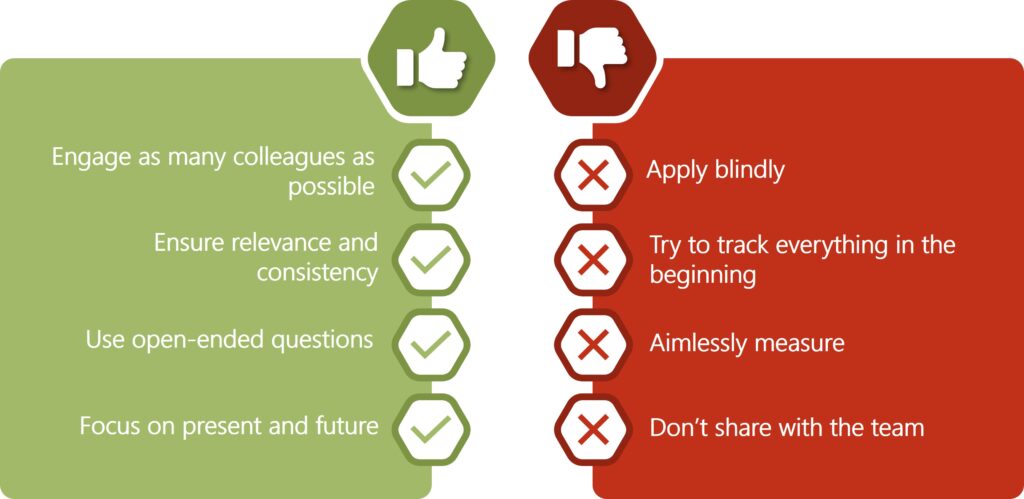Table of Contents
First time right (FTR) is both a manufacturing principle and a key performance indicator (KPI) that denotes the percentage of product that is produced within specification. Without FTR, the costs associated with additional inspections, first-pass yield losses, and added labor and energy all add up to a non-optimal environment.
With origins in Six Sigma, first time right is not about achieving perfection. Instead, its aims include:
- Developing controls
- Using the right assets
- Having a mindset in place toward perfection using science over art
- Consistency – doing things the same every time (assuming they’re the right things)
While Six Sigma allows for 3.4 defects per million transactions, the goal of FTR is to produce all units correctly the first time. As a result, your operation will be able to eliminate the need for any rework, reduce waste and operational costs, and optimize efficiency – all of which support long-term profitability and success.
Understanding (and Improving) the FTR Score
The calculation to determine your FTR score is pretty straightforward. Simply divide the number of units in the specification by the total units produced, and then multiply by 100 to achieve a percentage (see below).

Ideally, it’s best to establish an FTR mindset and supporting practices before bad habits ever get started. If you’ve done the calculation and aren’t happy with your score, however, consider making improvements in operational areas such as:
- Standardized operating procedures (SOPs)
- Process monitoring
- Materials consistency(i.e., quality of materials coming in)
- Maintenance
- Operator training and feedback
As you go through this process, you might get pushback from those who are happy with the status quo. It’s common for companies and personnel to become complacent over time. We often hear people make comments like “it’s close enough” or “we’re in the ballpark.” They may think reworking waste back into the product is an acceptable strategy. My response to that mindset is: Why not avoid producing waste that needs to be reworked in the first place?
Education is key for helping management and peers understand how the little things add up and impact the operation as a whole. Once they understand how first time right gains can improve the company’s bottom line, they’ll be more likely to get behind your initiatives.
Other Key Performance Indicators
Your company has undoubtedly developed key performance indicators (KPIs) for your operation. They likely focus on aspects such as production volume, on-time delivery, production costs, and environmental health and safety (EH&S), among others, depending on your specific products, facilities, personnel, etc.
Keep in mind that just having KPIs does not guarantee success. Problems can arise when:
- Trying to establish too many KPIs
- Not establishing the “best” or most productive KPIs
- Not prioritizing KPIs effectively (i.e., treating them all the same)
- Using ineffective or even inaccurate dashboards (leading to lower productivity)
It’s imperative that you keep your KPIs as simple as possible. I once worked with a company that was tracking over 80 KPIs in manufacturing alone. Even worse, they were focused on simply tracking performance and not identifying problem areas or making improvements.
My team worked with the company to shrink the KPI list down to about eight in total, and – perhaps more importantly – we helped them shift the philosophy away from only tracking data to analyzing and taking corrective actions. We focused on accountability, illustrating the beneficial impacts that KPIs can have and emphasizing their individual roles in achieving top performance.
While the training was enough to inspire this particular team to work together and get the company going in the right direction, other organizations might have more serious issues. In these instances, full culture change, driven by accountability management, may be needed.
A few key “dos and don’ts” for developing and using KPIs are shown in Figure 1.

KPI Scorecards
KPI scorecards are critical to the performance improvement process within your organization. It’s important to develop KPI scorecards that have buy-in and involvement from all the team members, as well as senior leadership.
The most important element of this process is to establish realistic, attainable goals. The team needs to realize that the KPIs aren’t simply a “pie in the sky” dream, but they represent real numbers that the company can actually achieve.
At the same time, your team members need to be accountable for what they control. You can’t have areas within your organization where teams or individuals are able to pull down others because the organization has no accountability management. On the other end of the spectrum, make sure that you’re giving constant communication and praise when things are going well. Accountability and positive feedback will both do wonders for morale within the organization.
Leadership needs to be involved in the KPI scorecard development process, and they can do this simply by asking questions. When senior management asks questions of those responsible, they’re going to get more attention and therefore results.
Company leadership should also be engaged in the scorecard review process. Depending on your organization, it may make sense to have structured KPI performance reviews where teams responsible for the KPIs deliver presentations on their progress (e.g., weekly for front-line operations such as supervisors or team leaders, monthly for operations management, and possibly quarterly reviews with senior management). This provides the opportunity for an effective two-way exchange between management and those responsible on the shop floor.
Team members should be informed and educated regarding how their improvements (or the lack thereof) are having an impact on the business. During the monthly meetings, for example, the leadership team can provide feedback and further the discussion. The key is to keep the exchange as positive as possible to drive motivation within the team.
As you go through the KPI improvement process, you’ll want to be able to show your results and validate them through a third party (e.g., the company’s accounting department). This carries a lot of weight by assuring the accuracy of your findings, providing more credibility with senior management.
In a best-case scenario, this step will enable you to align your improvements to the P&L and illustrate a demonstrable impact on the company’s bottom line. The result will be a favorable interest level from senior management, which can translate to increased access to resources for future initiatives that further support your quest for operational excellence.
To learn more, reach out to the author at rkramer@chemquest.com.
How can we help you? Let’s start talking: https://chemquest.com/lets-start-talking/


